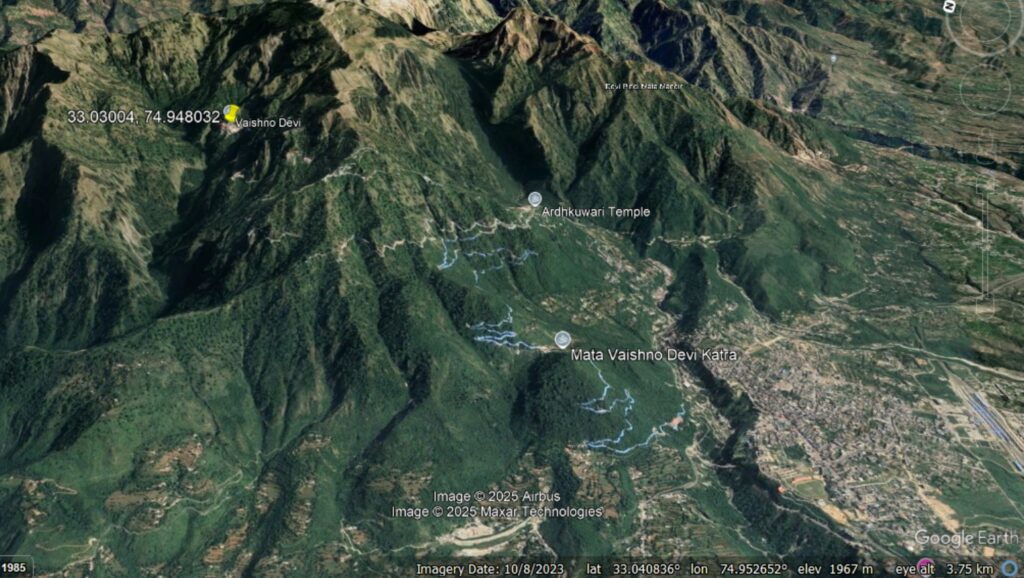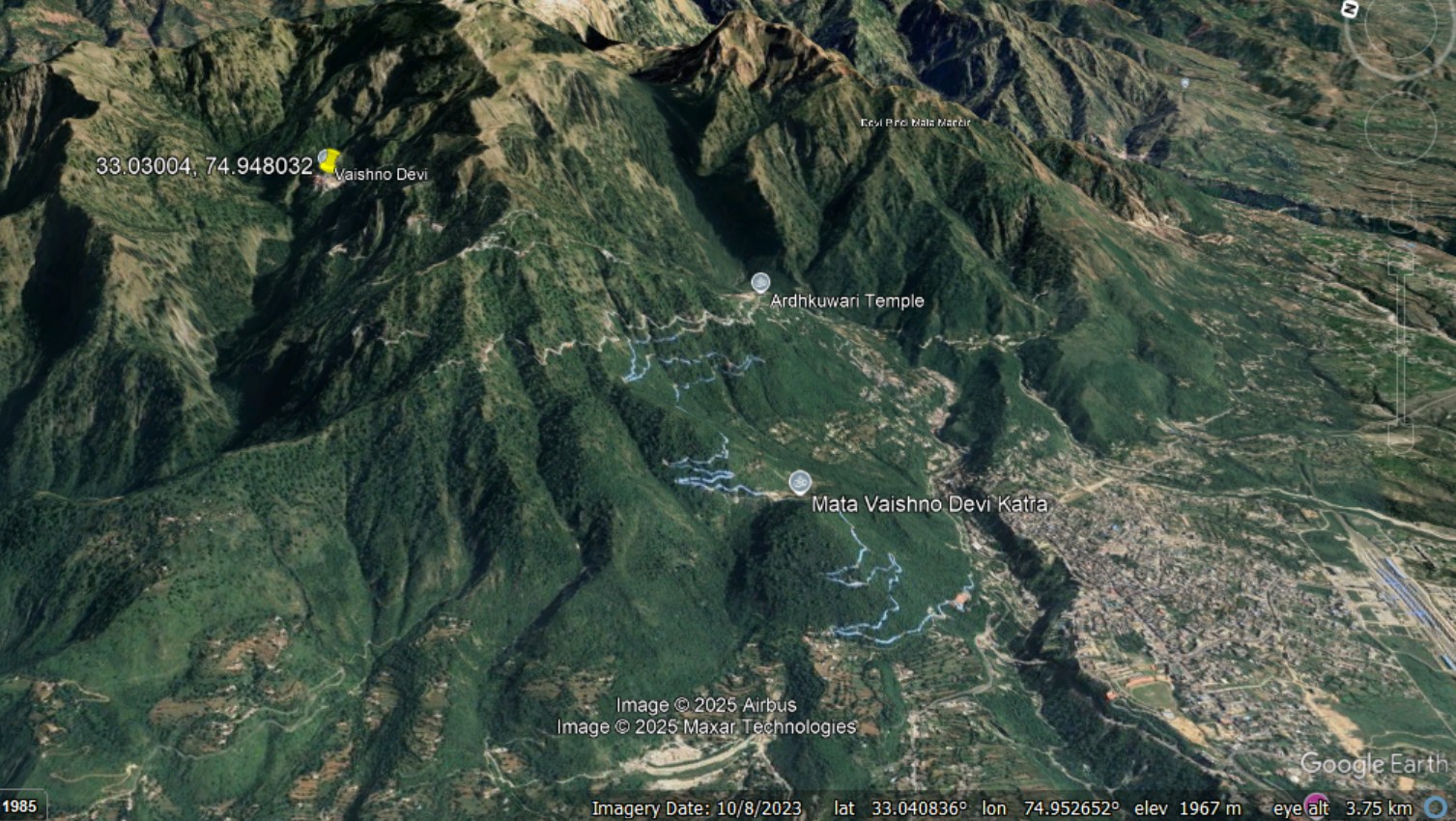On 26 August 2025, a landslide triggered by extraordinary rainfall killed at least 34 people and injured another 20 individuals.
On 26 August 2025, extremely intense late monsoon rainfall struck parts of Jammu and Kashmir in northern India, triggering extensive flooding and landslides. Unfortunately, a significant landslide occurred on the route to the Vaishno Devi shrine, a sacred Hindu site that attracts large numbers of pilgrims. At the time of writing, the reported loss of life is 34 people, with 20 more injured.
I can find little detailed information about this landslide at present – the site is remote and access is clearly extremely difficult. However, this highlights a very major issue that India faces during the monsoon.
The Google Earth image below shows the terrain around the Vaishno Devi shrine (which is located at [33.03004, 74.948032]:-

The landscape here is steep and geologically vulnerable, and the shrine is located on a remote mountain side, accessed by tracks. There is a good account of making the pilgrimage here – this person started the journey at 19:15 and they arrived at 02:00 the next day. The route is well-established but the journey is long (13 km). Most people travel on foot. According to the temple itself, over 5.2 million people have the journey so far in 2025. Travel during the monsoon is not recommended, but many people inevitably make the trip at this time.
Thus, this pilgrimage, and others that also take devotees into the Himalayas, places people in a dynamic landscape at a time when landslides are most likely. Inevitably, the vulnerability of those people is high. The tragedy at Vaishno Devi is the consequence.
Unfortunately, this event is not isolated. On 14 August, another major landslide occurred at Chasoti in Kishtwar district, also in Jammu and Kashmir, on the route of the Machail Mata Yatra pilgrimage. The final loss of life is unclear, but at least 66 people were killed and some reports suggest as many as 75 more people may be missing. There have been a number of other fatal landslides this year on Hindu pilgrimage routes.
And loyal readers of this blog may remember the 2013 Kedarnath disaster, when vicious debris flows struck the route of the Chardham pilgrimage when it was packed with pilgrims. The remains of 733 victims were recovered, but 3,075 people remain missing. With a total of 3,808 victims, this was one of the worst landslide disasters of the last 30 years.
There are news reports that Jammu and Kashmir chief minister, Omar Abdullah, is questioning why the Shri Mata Vaishno Devi Shrine Board did not suspend the pilgrimage. Reports indicate that the area received 629.4 mm of rainfall in a rolling 24 hour period, exceeding the previous record (342 mm) by a huge margin. In the view of the minister, these totals should have alerted the authorities to the potential for a disaster.
Whilst this is a pertinent question, it is addressing a short term issue, rather considering the underlying problems. The reality is that peak rainfall intensities in the summer monsoon are rapidly increasing across South Asia as a result of climate change, triggering landslides (especially channelised debris flows) and floods. At the same time, huge numbers of pilgrims are travelling into the landscape, where they are extremely vulnerable.
Managing this risk is very taxing, but many more people will lose their lives if systematic action is not taken to protect the pilgrims. These levels of loss cannot be tolerable.


